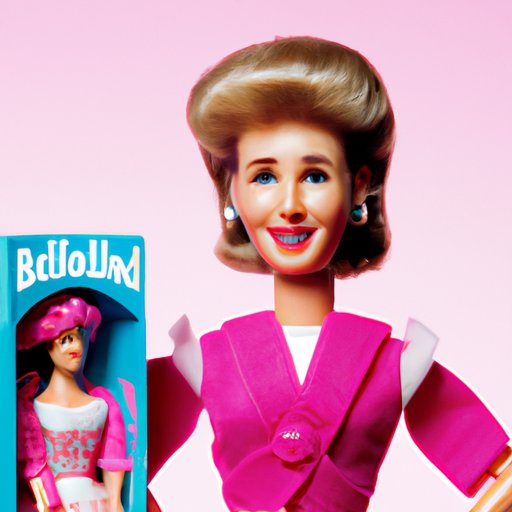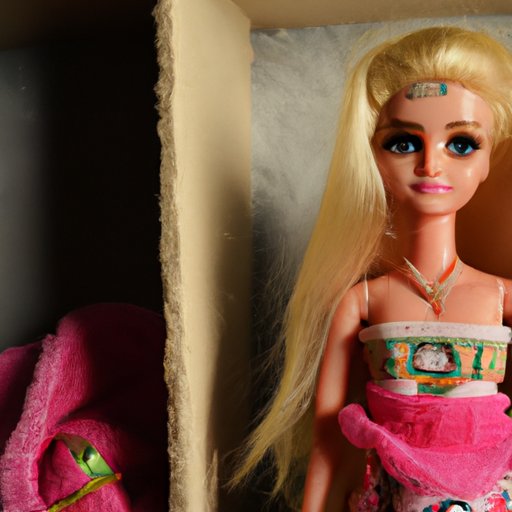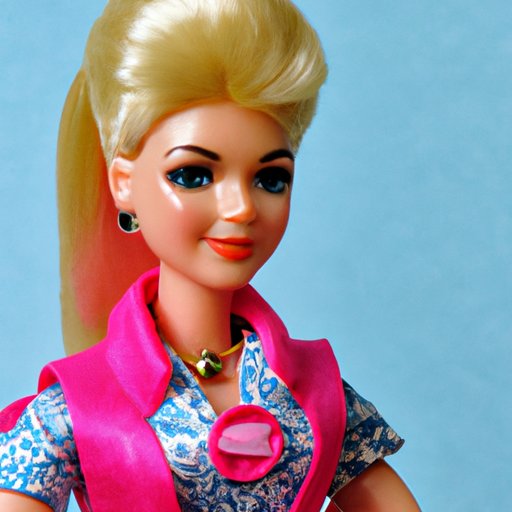Introduction
The Barbie Doll has been an iconic toy for generations of children around the world. Since its debut in 1959, it has become one of the most recognizable toys on the market. But who invented the Barbie Doll? In this article, we’ll take a look at the story behind the creation of the Barbie Doll and explore the legacy of its inventor, Ruth Handler.
A Historical Look at the Inventor of Barbie
The Barbie Doll was first introduced to the world in 1959 by Mattel, Inc., a toy company founded by husband and wife team Elliott and Ruth Handler. Ruth Handler is credited with being the inventor of the Barbie Doll and is often referred to as the “Mother of Barbie.”
The Story Behind the Creation of Barbie
Ruth Handler had a long-standing interest in dolls and doll making. She was inspired to create a new type of doll after watching her daughter Barbara play with paper dolls. Handler noticed that her daughter was using the paper dolls to imagine herself in different roles, such as a mother or a teacher. This inspired Handler to create a three-dimensional doll that could be used to act out these imaginative scenarios.
Ruth Handler: The Woman Who Brought Barbie to Life
Ruth Handler was born in 1916 in Denver, Colorado. She was a self-made businesswoman and entrepreneur who co-founded Mattel, Inc. with her husband Elliott in 1945. Handler was actively involved in the design and marketing of many of the products produced by Mattel, but she is best known for introducing the Barbie Doll in 1959. According to Handler, she wanted to create a doll that would empower young girls to imagine themselves in different roles and to think outside the box. She believed that “through the doll, [girls] could be anything they wanted to be.”

How Ruth Handler Revolutionized the Toy Industry with Barbie
Handler’s vision for the Barbie Doll was revolutionary for its time. She wanted to create a doll that was more than just a toy; she wanted to create something that would inspire young girls to dream bigger and to strive for success.
The Inspiration Behind the Design of Barbie
Ruth Handler took inspiration from a German doll called Bild Lilli when designing the Barbie Doll. Handler saw the potential in the Bild Lilli doll and wanted to create something similar for the American market. She made some modifications to the design to make the doll more modern and appealing to young girls. Handler wanted the Barbie Doll to have an adult figure, so she gave the doll a more mature physique than other dolls of the time. She also gave the doll bendable legs, allowing her to stand upright, and gave her eyes that opened and closed.
Celebrating the Legacy of Barbie’s Inventor
Ruth Handler passed away in 2002 at the age of 85, but her legacy lives on. Handler was inducted into the National Women’s Hall of Fame in 2001 for her work in revolutionizing the toy industry. Her invention of the Barbie Doll has been celebrated for decades and continues to be popular today.

Exploring the Cultural Impact of the Barbie Doll
Since its introduction in 1959, the Barbie Doll has had a major impact on culture and society. It has been both praised and criticized for its representations of women and its influence on young girls.
Popularity of the Barbie Doll
The Barbie Doll quickly became popular after its release in 1959. According to a study published in the Journal of Popular Culture, the Barbie Doll has sold over 1 billion units worldwide since its launch. This makes it one of the most successful toys ever created.
Representations of Women in Barbie Dolls
The Barbie Doll has been criticized for its unrealistic representation of women’s bodies. A study published in the International Journal of Eating Disorders found that Barbie Dolls can have a negative impact on young girls’ body image. The study found that exposure to Barbie Dolls can lead to increased body dissatisfaction and disordered eating behaviors in young girls.
Criticisms of Barbie and the Toy Industry
Barbie Dolls have also been criticized for their limited range of career options. A study conducted by the American Sociological Review found that Barbie Dolls are overwhelmingly represented in traditional female occupations such as nurse, teacher, and fashion designer, while male dolls are more likely to be represented in higher-paying, male-dominated fields such as engineer and doctor. This study highlights the gender stereotypes perpetuated by the toy industry.
Conclusion
In conclusion, this article has explored the history behind the invention of the Barbie Doll. We looked at the life and legacy of Ruth Handler, the woman who brought the iconic toy to life, and examined the cultural impact of the Barbie Doll over the years. Ruth Handler revolutionized the toy industry with her invention of the Barbie Doll, and her legacy continues to live on today.
Summary of the Findings
This article has taken a look at the history behind the invention of the Barbie Doll, exploring the life and legacy of its inventor, Ruth Handler. We examined how Handler revolutionized the toy industry with her creation and explored the cultural impact of the Barbie Doll over the years.
Implications for Future Research
Future research should explore the ways in which the Barbie Doll has evolved over time and how it has impacted young girls’ views of gender roles and body image. Additionally, research should examine the potential implications of the Barbie Doll’s continued popularity and its influence on future generations.
(Note: Is this article not meeting your expectations? Do you have knowledge or insights to share? Unlock new opportunities and expand your reach by joining our authors team. Click Registration to join us and share your expertise with our readers.)
